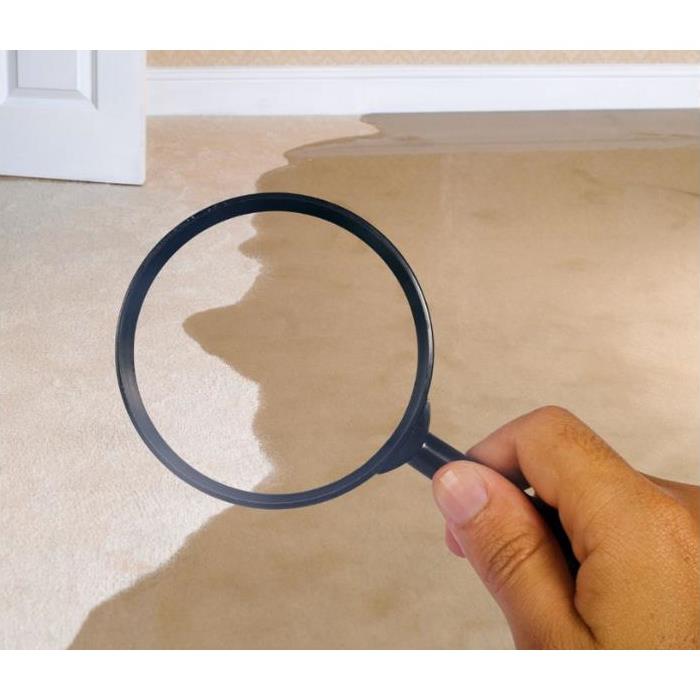Guide to Water Damage Assessment: Evaluating Property Risks
7/3/2024 (Permalink)
Water damage can create chaos on properties, leading to costly repairs and disruptions. When water enters a property, whether through burst pipes, flooding, or leaks, fast and proper assessment is key to minimizing its effects. Water damage restoration depends on precise evaluation to determine the extent of damage and initiate appropriate repairs. We’ll walk you through the concept of water damage assessment, common causes and signs of water damage, the needed steps for the assessment, and how professionals tackling Weymouth water damage restoration can help you handle this issue.
Understanding Water Damage Assessment
Water damage assessment involves evaluating the impact of water intrusion on a property. This process is important for managing property risks effectively. It helps identify affected areas, assess structural integrity, and prioritize restoration tasks. Early assessment is important as it allows for fast intervention to prevent further deterioration.
Common Causes of Water Damage
Several factors can lead to water damage, such as plumbing issues, storms, and appliance malfunctions. Each of these scenarios can cause extensive risks to properties:
- Plumbing Issues: Burst pipes or leaking fixtures can result in large-scale water damage.
- Natural Disasters: Floods and storms can overwhelm drainage systems, causing significant property damage.
Signs of Water Damage
If you recognize the signs of water damage early on, you can prevent extensive harm to a property. Here are some of the most common signs to watch out for:
- Visible Stains and Discoloration: Watermarks on ceilings, floors, or walls signal possible leaks.
- Softened or Warped Materials: Floors or walls that feel soft or swollen suggest water absorption.
- Peeling Paint or Wallpaper: Moisture can cause paint or wallpaper to peel away from surfaces.
- Softened Materials: Any softness or sponginess of the surfaces suggests water absorption.
- Musty Odors: A damp, musty smell often indicates mold growth, which can be a result of water damage.
Visual inspections, combined with these indicators, can help you quickly identify areas that need assessment.
Steps to Assess Water Damage
To mitigate water damage effects and restore affected properties, it is important to assess water damage first. To do this effectively, follow these detailed steps and make sure you thoroughly evaluate the issue:
Step 1: Initial Inspection
Start with a thorough visual inspection of the property. Look for visible signs of water damage, such as the ones mentioned above.
Step 2: Determine Extent of Damage
Classify the severity of water damage based on the visual clues observed during the inspection:
- Mild Damage: It usually indicates that the affected area is manageable and may not require extensive restoration efforts. However, noticing these early signs on time is important to prevent further escalation.
- Moderate Damage: Moderate water damage suggests that the affected area has experienced more significant exposure to moisture. This level of damage may require targeted interventions to prevent further structural degradation and mold growth. Restoration efforts may involve drying out affected areas, replacing damaged materials, and tackling potential mold issues.
- Severe Damage: This type of damage indicates extensive saturation and potential structural issues. Immediate action is necessary to mitigate further damage and health risks associated with mold. Restoration efforts for severe damage may involve extensive drying, removal, and replacement of seriously damaged materials, mold remediation, and thorough structural repairs.
Categorizing the damage severity helps prioritize restoration efforts and distribute resources effectively.
Step 3: Identifying Affected Areas
Once the severity is assessed, identify the specific materials and structural components affected by water damage:
- Structural Elements: Check walls, ceilings, floors, and foundations for signs of water intrusion.
- Building Materials: Assess damage to drywall, insulation, wood framing, and flooring materials.
- Electrical and HVAC Systems: Inspect electrical wiring, outlets, and HVAC components for water exposure.
Step 4: Documentation and Reporting
Document all findings from the assessment process thoroughly:
- Photographs: Take photos of visible damage and affected areas before any cleanup or restoration efforts begin.
- Notes: Record detailed observations including locations, types of damage, and severity classifications.
- Reports: Collect assessment findings into a formal report outlining the extent of damage, recommended actions, and estimated costs for repairs.
Thorough documentation is important for insurance claims, making communication with restoration professionals easier, and tracking the progress of restoration efforts.
Tools and Technologies for Water Damage Assessment
Modern tools like moisture meters and infrared cameras play an important role in proper assessment. Recommended by authoritative bodies like the IICRC, these tools help in identifying moisture levels and assessing structural integrity, guiding effective restoration efforts. When they use these advanced tools, property owners and restoration professionals can confidently assess water damage, minimize risks, and restore properties to preloss conditions.
Importance of Professional Assessment
Certified professionals follow IICRC standards, ensuring thorough and precise evaluations. Their expertise is important in detecting hidden damage, assessing risks thoroughly, and outlining necessary mitigation measures.
Preventative Measures and Mitigation Strategies
To minimize water damage risks, you can take these preventive measures:
- Regular Maintenance: Inspect plumbing systems and roofs regularly.
- Proactive Measures: Install leak detection devices and maintain proper drainage.
- Immediate Response: Address leaks as soon as possible to prevent further damage.
If you use these strategies you can reduce potential risks and the need for extensive restoration.
Contact SERVPRO of Weymouth, Hingham and Quincy for Proper Water Damage Assessment
Protect your property with expert assessment and restoration services tailored to your needs. For professional water damage assessment services or more information on water damage evaluation, contact SERVPRO of Weymouth, Hingham and Quincy today. Feel free to give us a call at (781) 337-0344 or fill out an online form on our website.






 24/7 Emergency Service
24/7 Emergency Service
